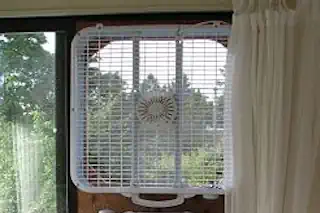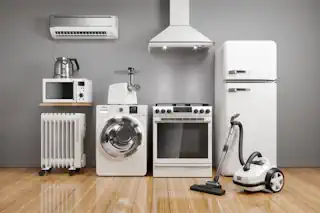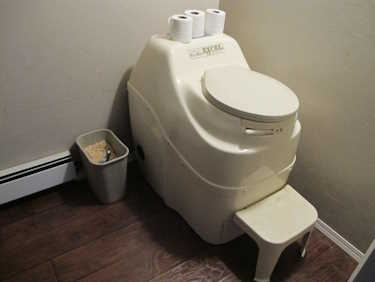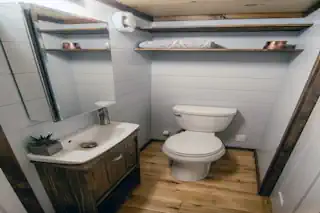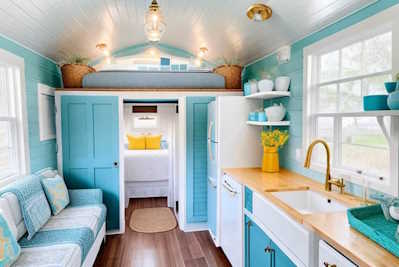The Warm Retreat: Navigating Cozy Heating in Tiny Homes
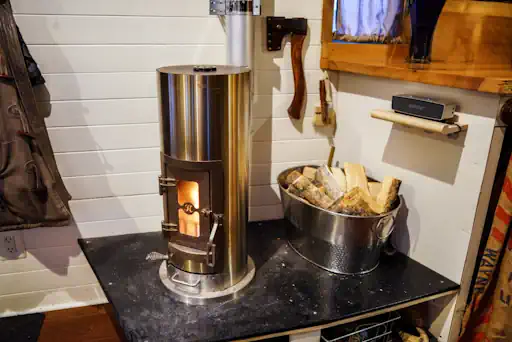
The allure of cozy nestling in a small, personalized space has captivated modern adventurers and ecological crusaders alike, leading to a surge in the popularity of tiny home living. But as idyllic as the image might be, there’s no escaping the need for a snug refuge against the elements. That’s where we nestle in – to guide you towards the most efficient and heartwarming heating solutions for your diminutive dwelling.
Small and Cozy – but Not Cold
Turning the key to your tiny abode should signify warmth and welcome, no matter the size. Ensuring that your mini-mansion stays heated effectively is not only about comfort; in the world of minimalism and eco-sustainability, it’s a statement of responsible living. However, the sheer lack of space and different building materials of tiny homes often require unconventional approaches to heating. This is where our exploration begins – identifying what warmth means when you’re working with less.
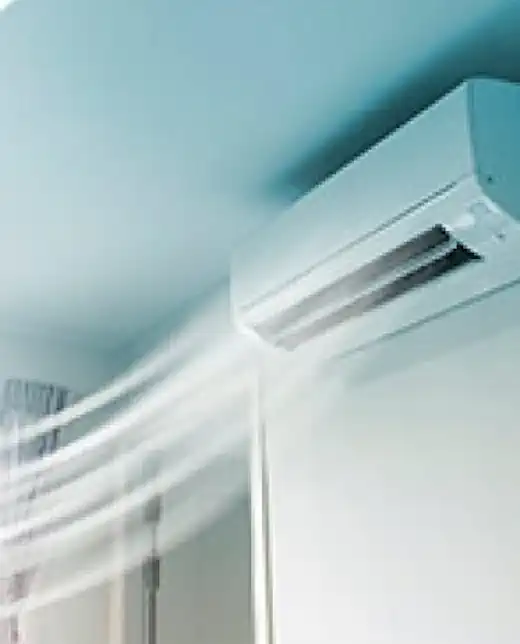
Propane, Wood, Solar and Electric Heaters – The Race for Efficiency
Electric heating proficiency and their space-saving attributes garner attention. Though notorious for high energy consumption, newer models boast better energy efficiency. Propane heaters, compact and voracious in their warmth provision, offer a preferable source for the off-grid tiny home inhabitant. Those who lean towards the traditional warmth of a wood fire must consider space constraints and storage for fuel.
Heat pumps present an intriguing solution, especially for those of us aiming to merge efficiency with eco-friendliness in our tiny homes. Radiating a warm, gentle hug to your space, heat pumps work by extracting heat from the outside air or ground, even in cooler temperatures, and transferring it indoors. This method is not just gentle on the planet due to its lower carbon footprint, but it’s also kind to your wallet in the long run. Their sleek, compact designs can easily integrate into the limited spaces of a tiny home without intruding on its cozy aesthetics. Choosing a heat pump means wrapping your home in a consistent, inviting warmth while maintaining a commitment to sustainable living.
But the rising star of the environmentally-responsible heating stage is solar heating. Its application in tiny homes, with their often sun-soaked locations, is a match made in energy-saving heaven. Diving deep into the specifics of these systems – their initial costs, running expenses, and carbon footprints – can help in carving out a warm and sustainable solution for your tiny domain.
Top 10 Heating Systems for Tiny Homes

Electric Heaters: Compact and increasingly energy-efficient, perfect for those who prioritize simplicity and are connected to the grid. Electric space heaters can be both fixed or portable and gently heat an entire space in a short period of time.
Propane Heaters: Portable and powerful, offering robust warmth for off-grid tiny homes. Like a wood stove these units require floor space and proper ventilation and can be a carbon monoxide concern if used inappropriately.
Wood Stoves: A traditional favorite, bringing a rustic feel and warmth with the use of renewable resources. A wood burning stove requires more room and proper ventilation in exchange for not using electrical energy.
Heat Pumps: Ideal for a blend of eco-friendliness and efficiency, working by transferring existing warmth from outdoors to indoors. Can also function as an air conditioning unit.
Solar Heating: Harnessing the power of the sun, this option is great for eco-warriors looking to reduce their carbon footprint. Solar power can also be generated at the same time.
Pellet Stoves: Utilizing wood or biomass pellets, these stoves are a more convenient and efficient take on the classic wood stove. They also require a dedicated small space for heating a tiny house.
Infrared Heaters: Emitting a direct, gentle warmth that efficiently heats objects and people rather than the air. These radiant heaters come in all sizes and can fill a gap on a cold night.
Radiant Floor Heating: Offering an evenly distributed warmth underfoot – a luxurious and efficient way to heat your space. Floor radiant heat is can be a luxurious addition to your living space.
Oil-filled Radiators: Portable space heaters, with the ability to retain heat for a long time, making them a cost-effective and efficient option for tiny living spaces. These units as your heat source will provide warm air very quickly.
Geothermal Systems: Though higher in initial cost, they offer immense long-term savings and environmental benefits by using the stable temperature of the earth to heat your home. In the world of tiny house heaters these are an awesome central heating and cooling system to consider.
Fit for Purpose – Finding the Right Heater for Your Domain
Choosing the heater that serves your tiny home best is a precise affair. Combining the efficiency of the system with the specifics of your dwelling – size, layout, insulation – is crucial. The climate also weighs heavily; a heater that performs astoundingly well in milder regions might stutter in the face of an Alaskan winter. Size meets performance meets environment meets budget – your heating system must juggle these with dexterity.
Radical Warmth – Innovations Tailored to Tiny
Tiny homes are at the forefront of personal and domestic scale efficiency. New technologies, from radiant floor heating to mini-split systems, are designed with exactly this in mind. Smart home systems take it up a notch, enabling precise temperature control that syncs with your lifestyle and can be managed remotely, catering to the wanderer in you by ensuring a warm welcome every time you return.
The Art of Staying Toasty on a Budget
For those adept at the craft, DIY heating projects present a budget-friendly route. While cost-effective, these ventures demand careful planning and even more meticulous execution. Safety is a non-negotiable aspect when adopting a DIY approach, especially in the confined quarters of a tiny home. Thus, a mix of innovation and cautiousness is the DIYer’s guide to a cozy retreat that won’t break the bank.
Top 10 Concerns for a DIY Heating Project
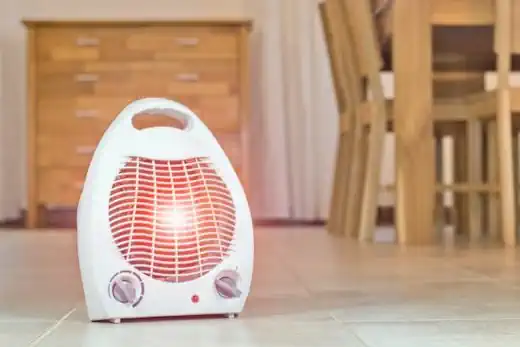
When taking on a DIY heating project for your tiny house heater, there are several important considerations to keep in mind to ensure efficiency, safety, and cost-effectiveness. Here are the top ten concerns when choosing heating options:
Safety Regulations: Ensuring the project complies with local building codes and safety standards is paramount.
Ventilation: Proper ventilation is crucial, especially for combustion-based heaters, to prevent the build-up of harmful gases.
Insulation: Maximizing insulation can significantly increase the efficiency of any heating system.
Energy Source: Choosing an energy source that aligns with your sustainability goals and availability.
System Efficiency: Opting for the most efficient system within budget to reduce long-term costs.
Installation Complexity: Understanding the complexity of the installation to ensure it’s within your DIY capabilities.
Space Constraints: Considering the size and layout of your tiny home to ensure the heating unit fits without cluttering your living space.
Maintenance Requirements: Being prepared for the maintenance needs of your chosen heating system.
Budget: Balancing upfront costs with long-term savings to find a cost-effective solution.
Aesthetics: Selecting a heating solution that complements the interior design of your tiny home.
Carefully weighing these concerns before beginning your project can help you create a cozy, warm, and safe environment in your tiny home.
Forecast for Tiny – The Future of Home Heating
Heating technology is on a charming path of miniaturization and energy optimization – perfect for the tiny home climate. Our projections gaze favorably upon a future where micro-nuclear batteries or geo-thermal solutions might redefine warmth in the minimalist space. The community itself, a bastion of inventiveness and pragmatism, will surely contribute to shaping this evolution.
Cozy and Conscious – the Crossroad of Comfort and Responsibility
Sustainable heating is no longer an option; it’s a necessity that deeply resonates with the ethos of the tiny home lifestyle. Our tiny venture must leave the lightest footprint, radiating warmth that comes from responsible choices and thoughtfully engineered systems. Efficiency and eco-friendliness are not mere buzzwords; they’re the keystones of heating innovations for the tiny home community, and our very own pillars of warmth.
In the End, It’s About Making Informed and Warm Choices
When the chill of the outside world meets your tiny haven, it’s the heart of the home – its heating system – that beats steadily, offering comfort and safety to all within. Your decision regarding this essential element must be well-informed and aligned with your values. We encourage you to share your heating tales and tactics, to build a community of warmth that transverses the seasons.
The world of tiny home heating is as varied as it is vital. Choosing the right solution is not just a technical conundrum; it’s a personal statement, a manifestation of the kind of life you want to lead. Warmth in a tiny home isn’t just about temperature – it’s about creating a space that cuddles your body and your beliefs, a retreat that resonates with the eco-warrior within you.
Frequently Asked Questions (FAQs)
What’s the most efficient way to heat a tiny house?
The efficiency of a heating system in a tiny home depends on various factors such as location, insulation, and personal preferences. Solar heating is gaining popularity for its eco-friendliness and cost-effectiveness, especially in sunny areas. Meanwhile, propane and electric heaters are praised for their efficiency in different climates and settings.
Can I install a heating system in my tiny house myself?
It’s possible to install certain heating systems yourself, especially if you’re handy and knowledgeable about the process. However, for complex systems like solar heating or mini-split systems, professional installation is recommended to ensure safety and efficiency.
How do I choose the right size heater for my tiny house?
Choosing the right size involves considering your home’s square footage, insulation quality, and climate. A heater that’s too large will consume excessive energy, while one that’s too small won’t adequately heat your space. Consulting with a heating specialist can provide you with a tailored recommendation.
Are heat pumps a good option for tiny houses?
Heat pumps are increasingly becoming a favored choice for tiny homes due to their energy efficiency and dual functionality—they can heat your space in the winter and cool it during the summer. Their performance is particularly impressive in moderate climates, where the temperature fluctuations are within their optimal operating range. When considering a heat pump, it’s vital to evaluate your specific needs, including your local climate and the insulation quality of your tiny home, to determine if it’s the right fit for you.
Are there eco-friendly heating options for tiny houses?
Yes, numerous eco-friendly options are available, including solar heating, pellet stoves, and radiant floor heating, which prioritize environmental sustainability without compromising on warmth.
How can I heat my tiny home on a budget?
For those on a tight budget, exploring DIY heating solutions, such as modifying existing appliances or installing simpler heating systems like wood stoves, can be cost-effective. Additionally, focusing on insulation can significantly reduce the need for active heating.
What’s the future of tiny house heating?
The future of tiny home heating looks promising, with advancements in technology focusing on energy efficiency, sustainability, and personalization. Innovations such as micro-nuclear batteries and geo-thermal solutions are on the horizon, aiming to reduce the environmental impact and offer more effective heating solutions.
We hope these FAQs address some of your most burning questions about heating your tiny home—with both efficiency and heart.
